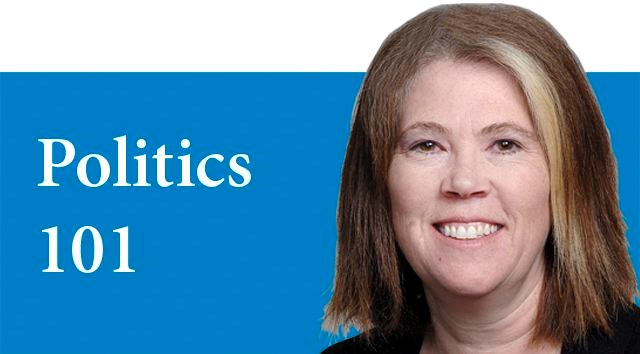Today, I am continuing my series on the proposed electoral systems that will be on the referendum ballot in the fall. Last week I described the Mixed Member Proportional (MMP) Voting System. The other two options are as follows: the Dual Member Proportional Voting System and the Rural-Urban Proportional Voting System.
Just a reminder before I start, the change to the voting system will only be applicable to provincial elections. It is important to remember this fact as you decide what you think is the best system when you vote in the referendum because what is being discussed is how a change will impact provincial politics and government. The federal system of first-past-the-post will remain the same.
This week, I am going to describe the rural-urban system as it is explained in the Attorney General's report. This system is not used in any other place in the world but it is made up of two systems that are used in other places. The basic principle behind this system is to recognize the "varied geography and demographic needs of voters" in British Columbia. Many voters in rural ridings might be concerned about changing the electoral system because they believe that they will lose local representation. This system is designed to deal with that concern and help to maintain local representation by using mixed member proportional representation in rural areas. Last week I explained that MMP uses our current first-past-the-post system in combination with a list proportional representation system. So people living in rural ridings will choose their MLA the same way as they do now. Their electoral district will have one MLA but their region will get a certain number of top-up regional MLAs to ensure a level of proportionality.
For those voters living in semi-urban or urban areas, they will use the Single Transferable Voting system (STV). Their districts will have multiple members and they will be able to rank their choices for MLAs. So their districts will have between two and seven MLAs although the Attorney General's report suggests that the STV ridings will likely have at the higher end of that range of that number of MLAs. STV is a system that provides a lot of choice to the voter. They rank order their preferences for individual candidates so their choice might be to rank Candidate A from the one party but then rank Candidate B from another party and still Candidate C from another party. Or they may choose to only rank one candidate and not rank any of the others. While the ballot is fairly simple to understand the counting of the ballots is more complicated. Now, obviously the voters will rely on Elections BC to do the counting but many people still want to understand the calculations for electing MLAs. I can provide the basics.
First, a quota is determined for the number of votes needed to win a seat in the riding. This quota number is determined by a calculation using the number of valid votes and the number of seats available. Let us assume that there are 10,000 valid votes and three seats in the riding. The quota formula is: (number of valid votes/number of seats available+1)+1. So in this hypothetical riding the calculation would be: (10,000/3+1)+1= 2,501.
Once the quota is determined, the votes are counted. In this case, if a candidate gets more than 2,501 votes they are elected and if they received more than 2,501 their "surplus" votes are redistributed based on the second choices of those voters. The votes are transferred using what is called a "transfer value." So a candidate that received less than 2,501 on the first count may then get some of the transfer value and be pushed over the threshold to get a seat. This redistribution process continues until the seats are all allocated. It might also be the case that the person with the lowest number of votes gets knocked off the list of potential winners and that person's second choice ballots get redistributed. This system works to create proportionality directly from the votes within the riding rather then using regional top ups.
In this way, the rural-urban proportional voting system brings together two well known and well used systems to try to deal with the complexity of our geography and demographic.
If you are interested in finding out more information, please read the document "How We Vote: 2018 Electoral Reform Referendum Report and Recommendations of the Attorney General" (available on the internet by searching that title). Next week I will explain the dual member proportional voting system.



